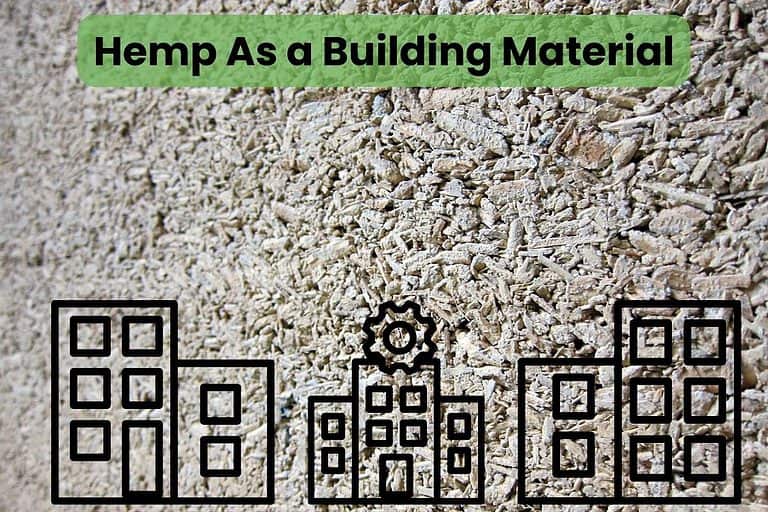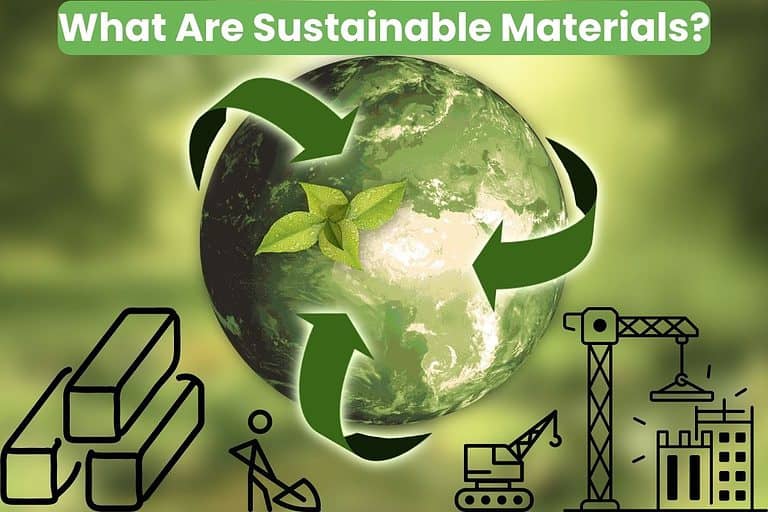The Top 15 Eco-Friendly Green Buildings in North Carolina
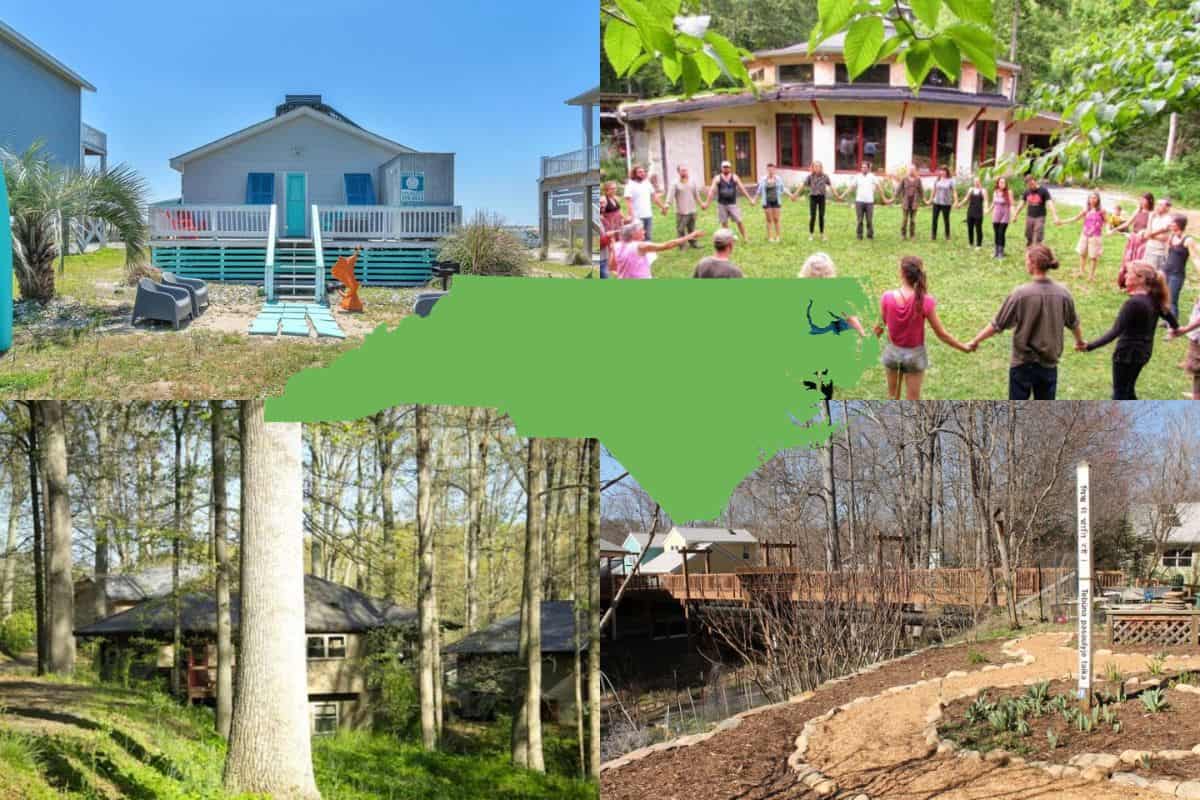
Images courtesy of Oak Island Accommodations, RA Media LLC, Westwood Cohousing Community, and RA Media LLC.
The number of green buildings in North Carolina is rising as homeowners, contractors, and architects become more eco-conscious.
Professionals are taking the lead in making the construction industry as eco-friendly as possible to combat climate change. From educational institutions to governmental buildings, there are many eco-friendly green buildings in North Carolina that can inspire you to participate in the sustainable building agenda.
According to the World Green Council, the built environment accounts for 39% of the world’s energy-related carbon emissions. Eco-friendly buildings come in to solve this menace because they use materials with minimal environmental impact.
Besides conserving the environment, green buildings help homeowners save money on energy bills while creating conducive and healthy indoors.
In this article, I’ve rounded up a list of the top 15 eco-friendly green buildings in North Carolina.
From their energy and water-saving capabilities to waste management methods, you’ll be amazed at how these buildings make the world better. Keep reading!
1. The Love Shack

Located in Fontana Dam, The Love Shack is one of the top eco-friendly green buildings in North Carolina due to its net zero water and energy design.
The home’s owners, Ken and Dr. Cindy LaRoe, have an unending love for the planet and aim to conserve it through their practices. Consequently, they built a rental apartment that creates as much energy as it uses while minimizing water consumption.
The owners are passionate about clean energy because they believe it’s an excellent way to protect water, air, and land from pollution. As a result, they designed this house to rely mainly on clean energy sources.
The Love Shack home incorporates the following eco-friendly features:
- Thermal windows: These windows have low-emissivity coatings that control heat transfer between the indoors and outdoors. They reduce energy loss by 30 to 50 percent, making them suitable for passive house construction.
- Water collection systems: This home has a cistern and other rainwater collection systems that capture water from the roof and store it in tanks for different uses.
- Solar panels: Solar panels provide energy to power the primary operations of this home. Some of these operations include lighting, air conditioning, and appliances.
- Eco-conscious materials: The home was built with reclaimed wood and other locally sourced materials to conserve natural resources and minimize its carbon footprint.
- Energy conservation: It uses a very high-efficiency HVAC air conditioning system. Additionally, it’s illuminated by LED lights to save energy. Its ceiling, with R-50 spray foam insulation, helps conserve more energy.
2. Earthaven Ecovillage
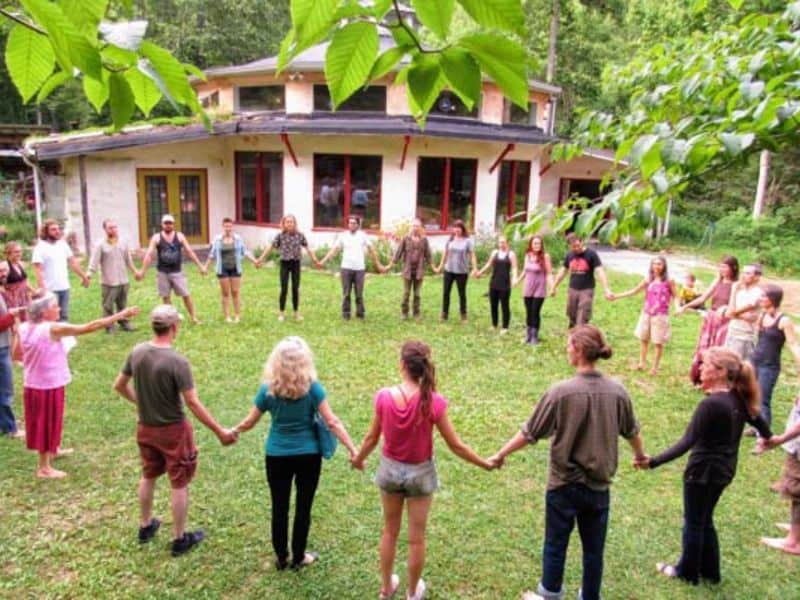
Located in the Black Mountains near Asheville, Earthaven Ecovillage is dedicated to caring for the planet and people through a sustainable and holistic lifestyle.
Since its establishment in 1995, the village has remained at the forefront of conserving the environment through sustainable practices.
The village is off-grid — it relies on energy generated from solar panels and micro-hydroelectric generators.
Its off-grid nature means it has reduced its carbon footprint due to electricity generation.
Earthaven has its structures designed with permaculture principles. These principles help create sustainable human settlements where plants, people, animals, and nature coexist harmoniously. Therefore, it’s a design that promotes ecological soundness and economic prosperity.
Earthaven Ecovillage encompasses the following sustainability features:
- Natural materials: The village is built with natural, sustainable building materials. These buildings use locally sourced lumber and have living roofs. Most have straw bale walls, while others are made with cob due to the material’s high thermal mass.
- Power and heating: Since the village is off-grid, buildings rely on passive solar heating and have propane and wood stoves as backups. Moreover, they have two micro-hydro power systems for electricity.
- Water quality: The village has dug ponds strategically to capture and store rainwater runoff. It uses swales to direct water from the ponds to where it’s needed.
3. Westwood Cohousing Community

Westwood Cohousing Community is located in Asheville, North Carolina.
The community is dedicated to creating a caring, vibrant, sustainable community where cooperation and diversity are highly valued.
Westwood Cohousing prides itself on being one of America’s best multi-generational, eco-friendly communities. It promotes light living, where people value land for prosperity and environmental conservation.
The community’s main features include a playground, sustainable structures, a creek, and terraced gardens.
Westwood Cohousing Community is eco-friendly due to the following features:
- Central radiant-floor heating: Unlike forced-air heating and cooling, radiant-floor heating is efficient since it doesn’t have duct losses. Moreover, it delivers heat into the room where occupants are located, making it more comfortable.
- Solar collectors: The community’s buildings have solar collectors to capture solar energy for hot water systems. Therefore, it doesn’t rely on grid-based electricity to heat water.
- Landscaping: To conserve water, it incorporates permaculture landscaping principles like terracing, swales, and water collection systems. Moreover, it has native plants and edible landscaping accounting for between 50 and 75% of all food.
- Solar energy: It has photovoltaic solar arrays that supply up to 25% of its energy needs.
- Transportation: The community has electric vehicle charging stations and a sizable bike shed to promote low-emissive transportation.
4. Echo Hills Cottages

Located in West Asheville, Echo Hills Cottages has some of the most eco-friendly green buildings in North Carolina.
The cottages’ use of sustainable building materials and resource conservation contributed immensely to their qualification for LEED Platinum certification.
The Department of Energy has labeled these cottages zero energy-ready homes for their low energy demand and reliance on renewable energy sources.
Moreover, the site plan incorporates permaculture principles like drought-resistant native edible plants, water retention practices, permeable walkway surfaces, a segregated parking area, and natural, organic care.
Echo Hills Cottages boast the following sustainability features:
- Efficient appliances and lighting: The cottages have energy-recovery ventilation systems, mini-split heat pumps, low E vinyl windows, and tankless water heaters to conserve energy.
- Green building materials: The cottages were built with locally sourced materials to minimize transportation emissions. Furthermore, they have solid hardwood flooring made from oak.
- Insulation: The buildings have Structural Insulated Panels (SIPs) and Insulated Concrete Forms (ICFs) that provide superior insulation.
- Solar energy: Rooftop solar photovoltaic panels that generate power to supplement electricity, lowering the cottages’ carbon footprint.
5. Olivette Riverside Community and Farm
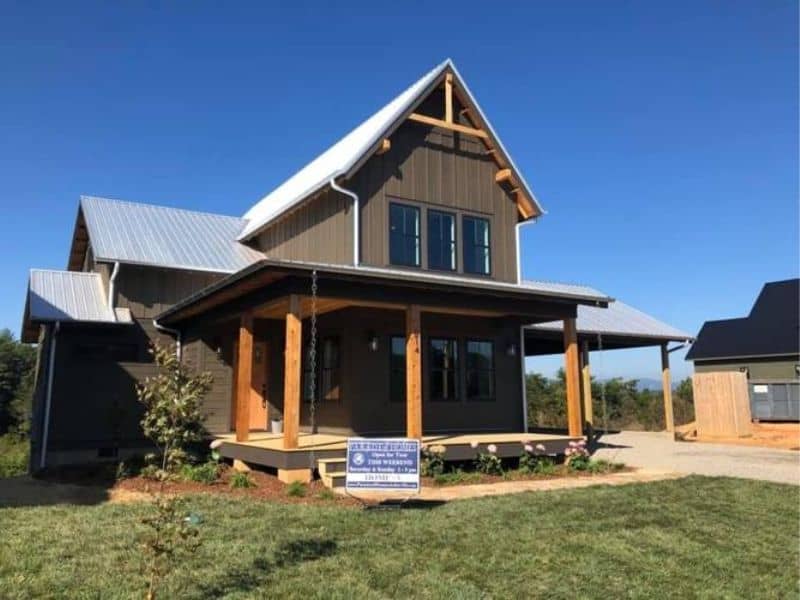
Olivette Riverside Community and Farm is North Carolina’s first agrihood.
What sets this community apart is that it promotes a sustainable lifestyle through its working farm.
The working farm supports farm-to-table dining, whereby residents enjoy freshly harvested food.
The 411-acre (166-hectare) planned community is home to a biodiverse flower, fruit, and vegetable farm. Its planning is based on the desire for an eco-friendly community that exists in harmony with the planet.
Olivette Riverside Community and Farm has a unique sustainability approach that promotes a social culture. It achieves this by organizing performances and social gatherings at its amphitheater.
Site planning for any construction in the community integrates the following:
- Sustainable construction design
- Green infrastructure
- Waste management
- Land and soil management
Olivette community has the following green features:
- Geothermal heating and cooling: Its buildings have geothermal energy systems for heating and cooling. These systems draw on the Earth’s natural heat for operation.
- Solar power: The community has a photovoltaic panel array that provides power to supplement electricity. Residents can also supplement their geothermal heating and cooling with passive and active solar energy for efficiency.
- Energy efficiency: Most buildings within the community have a Home Energy Rating System (HERS) score of less than 55. Some are also net zero in terms of energy usage.
6. Durham County Courthouse
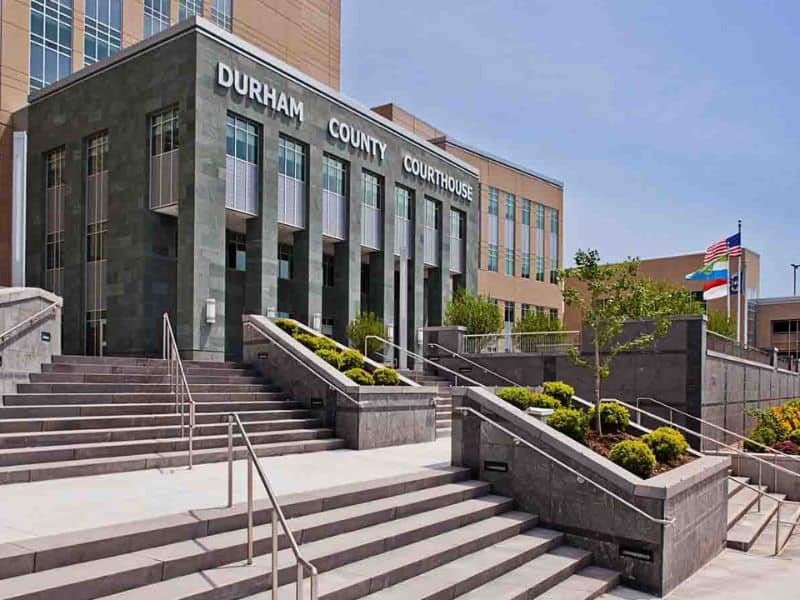
Durham County Courthouse is one of the top eco-friendly green buildings in North Carolina due to its eco-conscious design.
O’Brien Atkins Associates designed the 11-story building to be resource-efficient and environmentally friendly. Consequently, it earned a LEED Gold certification for its energy-saving initiatives.
The building’s north-south orientation plays a crucial role in its sustainability. The orientation maximizes daylighting, reducing the demand for artificial lighting to conserve energy.
Moreover, Durham County Courthouse was built with locally sourced materials to eliminate transportation emissions. As a result, it has a lower carbon footprint than houses built with materials sourced from afar.
Other features that make this courthouse eco-friendly include:
- Rainwater harvesting: It has a cistern that captures and stores rainwater for non-potable uses.
- Green roof: It has an extensive living roof that lowers energy demand by providing insulation and a cooling effect in summer. The roof also helps reduce the heat island effect.
- Transportation: The courthouse has access to public transportation systems like buses and light rails. Therefore, it encourages employees to use public transport. Moreover, it has bicycle lockers to reduce carbon emissions from motor vehicles by promoting cycling.
- Water conservation: The building has waterless urinals and water-efficient fixtures to reduce water consumption. It also has low-flow systems to minimize water wastage.
- Construction materials: It was built with recycled and renewable materials like crushed plate glass. Moreover, at least 50% of the wood used in construction is FSC-certified.
7. Eastern 4H Environmental Education and Conference Center
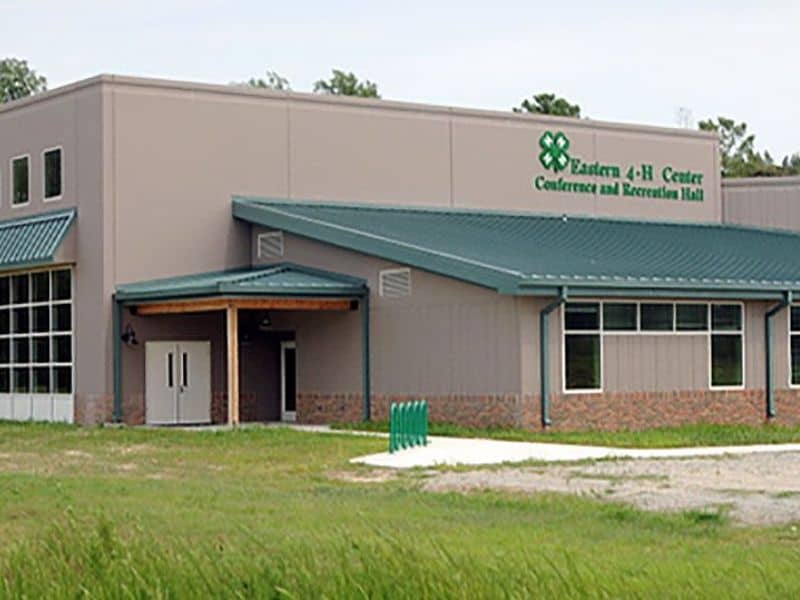
Eastern 4H Environmental Education and Conference Center is a North Carolina State University building that opened in 2010. It became LEED Gold-certified in 2013 due to its immense eco-conscious features.
The 21,000-square-foot (1,950-square-meter) building serves as an auditorium and conference center for environmental education and recreational activities.
It’s one of the university’s high-performance buildings with the following sustainability features:
- Recycled materials: It integrates over 20% recycled building materials like acoustic panels, structural steel, ceramic tiles, and denim-based insulation.
- Renewable materials: It has bamboo flooring, a highly renewable material.
- Material sourcing: Most materials like concrete and metals were regionally harvested to minimize transportation emissions.
- Energy conservation: The building has occupancy sensors that regulate lighting depending on occupancy to save energy. It also has low-E glass windows to reduce heat gain.
- A rain garden: It controls stormwater and filters building runoff.
- Geothermal system: It contributes 25% of the building’s energy cost savings due to its heating and cooling efficiency.
8. Durham County Human Services Complex
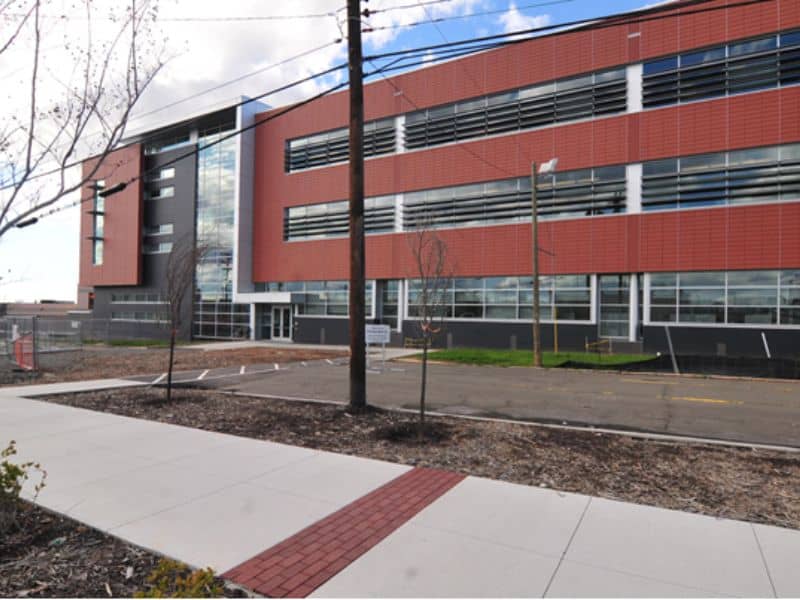
Durham County Human Services Complex is designed to meet the highest sustainability standards. The design integrates features that target LEED Gold certification.
The complex has roof monitors to maximize daylight. These monitors allow easy penetration of daylighting deep into the building. Consequently, they help reduce the demand for artificial lighting.
Additionally, it has a white roof membrane that reflects up to 85% of the sun’s heat to keep the interior cool without relying on the HVAC system.
Other features that make Durham County Human Services Complex eco-friendly include:
- Under-floor air distribution systems that reduce cooling and heating loads.
- Exterior sunshades to maximize daylighting for uninterrupted views.
- High-efficiency irrigation system for landscaping.
- Low-flow water closets and waterless urinals in restrooms.
- At least 75% of construction waste is recycled.
- Stringent limits on VOC emissions.
- Carbon dioxide sensors to monitor indoor air quality.
9. James B. Hunt Jr. Library
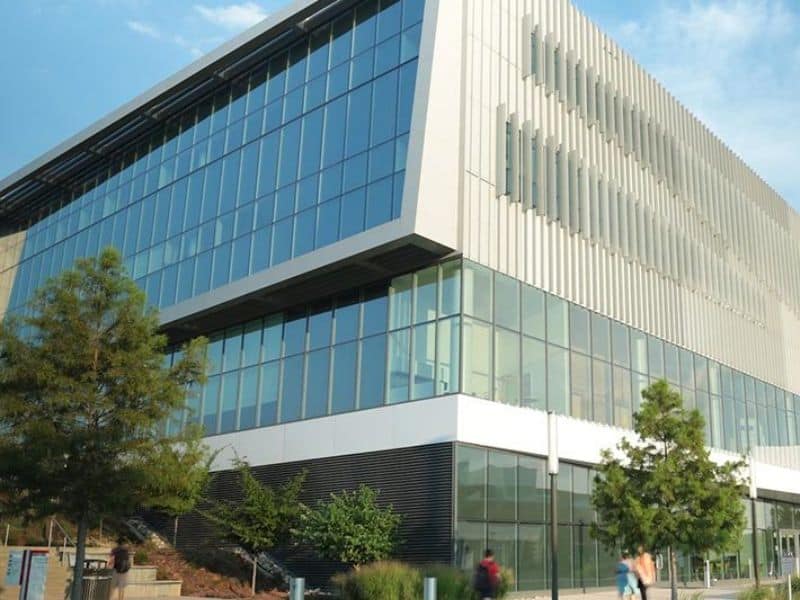
James B. Hunt Jr. Library is an NC State University building that meets the highest sustainability and performance standards.
The 207,353-square-foot (19,264-square-meter) building was opened in January 2013 and became LEED Silver certified in June of the same year.
Besides being a library, the building is home to the university’s Institute for Emerging Issues.
James B. Hunt Jr. Library has the following eco-friendly features:
- Rooftop solar hot water.
- A green roof to reduce the demand for heating and cooling.
- A rain garden that controls stormwater runoff.
- Efficient plumbing fixtures for water conservation.
- An efficient wall facade system that reduces passive heat gain.
- Integral solar shades that provide high daylighting levels and exterior views.
- A high SRI paving system that reflects the sun’s heat.
10. The Green Square Complex
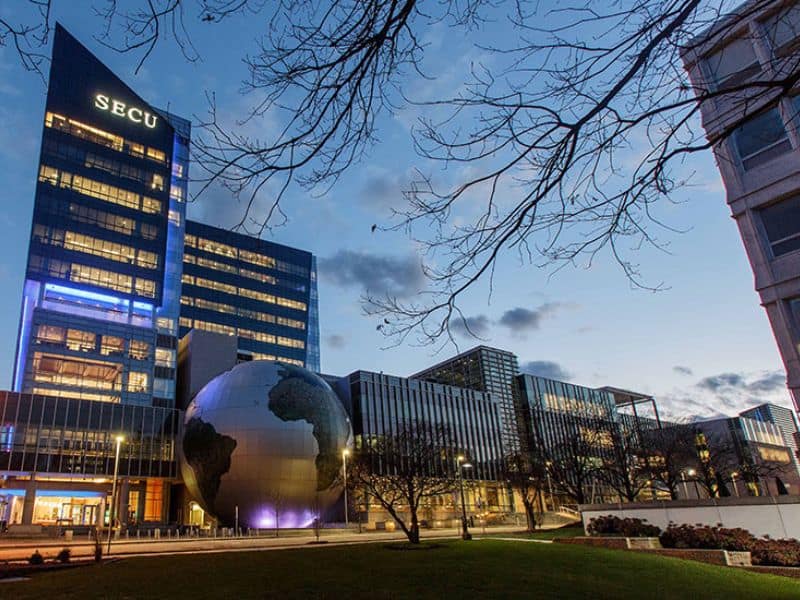
The Green Square Complex is a government-owned building with offices, the Nature Research Center (NRC), and a parking space.
The complex’s design emphasized natural resource conservation and sustainability, leading to the award of LEED Gold certification.
The building has a green roof that creates a layer of insulation. The insulation helps keep the interior cool in summer by minimizing heat gain. Moreover, it prevents heat loss in winter to keep the interiors warm.
The Green Square Complex integrates cisterns for rainwater collection and reuse.
Its design incorporates native and regionally-adaptive plants for minimal irrigation. This is a crucial environmentally friendly landscaping that conserves water and energy.
Where possible, condensate from air handlers is directed to cisterns and landscaping to save more water.
The complex’s other sustainable features include:
- Use of recycled materials for exterior walkways.
- Permeable walkway underlayment for efficient stormwater infiltration.
- Highly reflective paving for parking to minimize the heat island effect.
11. Kaplan Center for Wellness
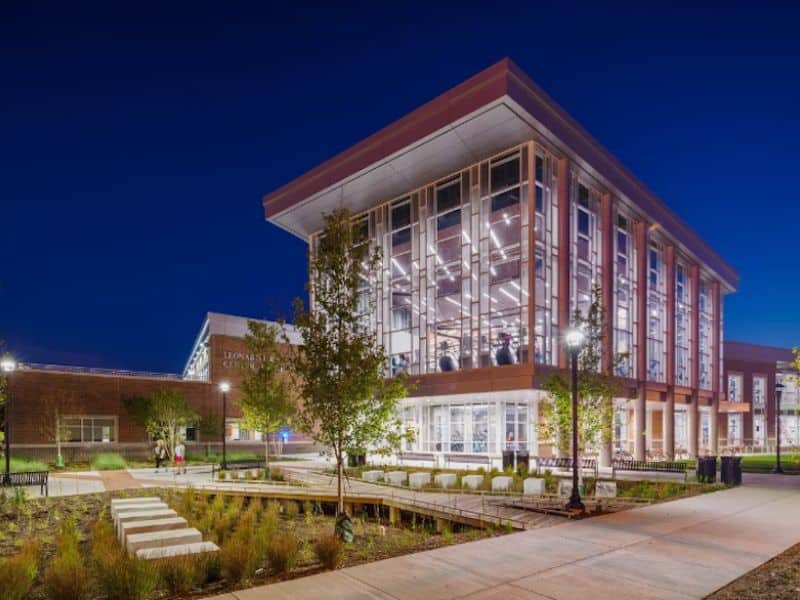
Kaplan Center for Wellness is among the best eco-friendly green buildings in North Carolina due to its focus on sustainable living.
It’s among The University of North Carolina at Greensboro (UNCG) facilities that are LEED Gold-certified.
The 216,000-square-foot (20,100-square-meter) facility has a weight and fitness space, lap and activity pools, basketball courts, and other fitness equipment.
The Kaplan Center for Wellness is among the buildings designed to help the university attain its goal of reducing water consumption and investing in sustainable initiatives.
The building promotes energy efficiency through natural lighting. It has large windows that bring in natural daylight, reducing the need for artificial lighting.
It’s also fitted with energy-efficient lighting systems that help conserve electricity.
The center’s bioretention field with a series of cells provides peak discharge attenuation and stormwater treatment.
Finally, the facility has rain gardens, lawn basins, and collection areas for rainwater management.
12. Briar Chapel
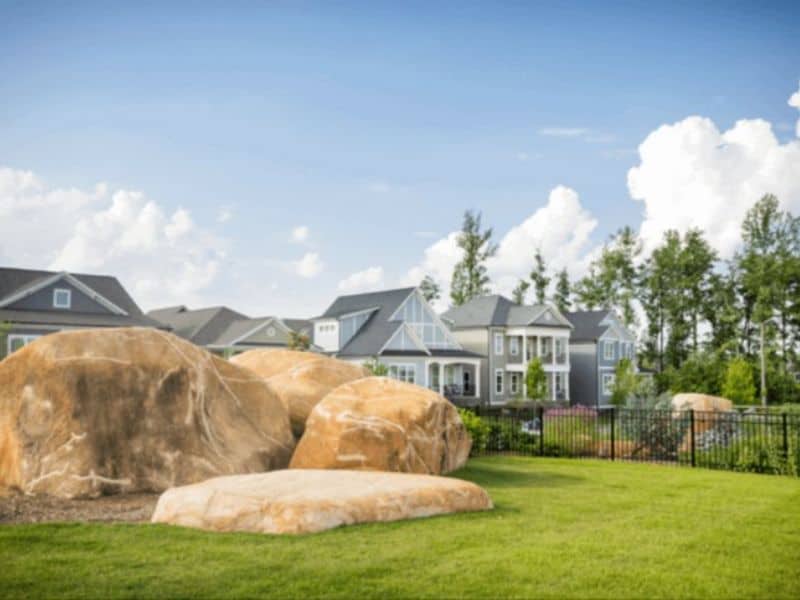
Located in Chatham County, Briar Chapel is the largest eco-friendly community in North Carolina.
It’s a 1,500-acre (607-hectare) green community designed to be eco-conscious.
All homes in this community are NAHB green-certified, meaning they integrate green and sustainable building principles to remain eco-friendly.
A notable feature of most of these buildings is that they’re south-facing to maximize solar capability for heating.
Moreover, these homes incorporate energy-efficient tactics and equipment like programmable thermostats, low E windows, engineered wood, and HVAC duct sealing.
They’re also built with low-VOC paints to ensure indoor air quality.
Most of the materials used to build these homes were repurposed from other projects. Repurposing these materials diverted considerable construction and demolition (C&D) waste from landfills.
Being 24% more energy efficient than other North Carolina homes, these buildings have helped residents save over $2 million in energy bills.
13. Cimarron Homes
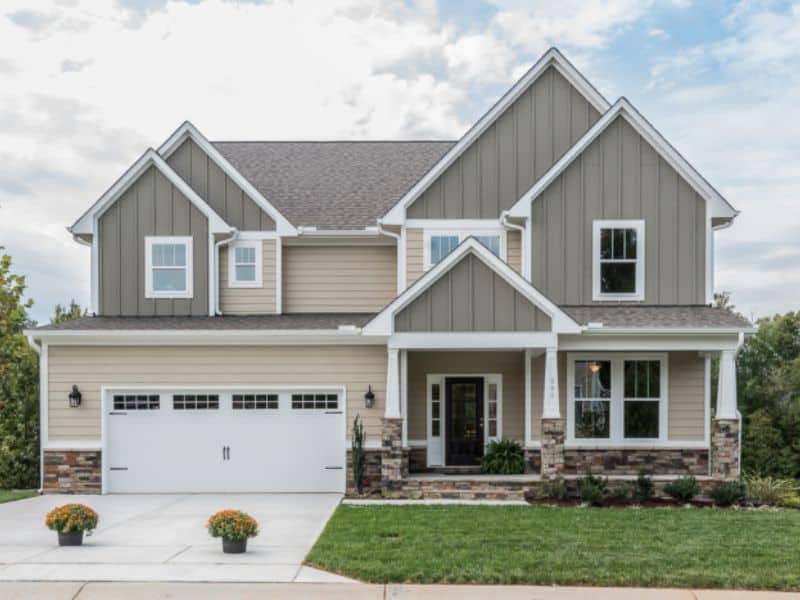
Cimarron Homes in North Carolina’s Triangle Area are among the most sustainable buildings in the state.
All Cimarron Homes are NGBS-certified and meet the highest sustainable construction standards.
The homes are built with advanced technologies that ensure energy efficiency, indoor air quality, and water conservation.
Site selection is the first sustainability feature at Cimarron Homes. The site is selected and prepared based on terrain for infiltration and stormwater retention.
Moreover, the buildings have advanced framing and tight construction with exterior wraps for thermal efficiency.
Finally, they’re fitted with low-flow faucets, toilets, and shower head fixtures to conserve water.
14. Carol Johnson Poole Clubhouse
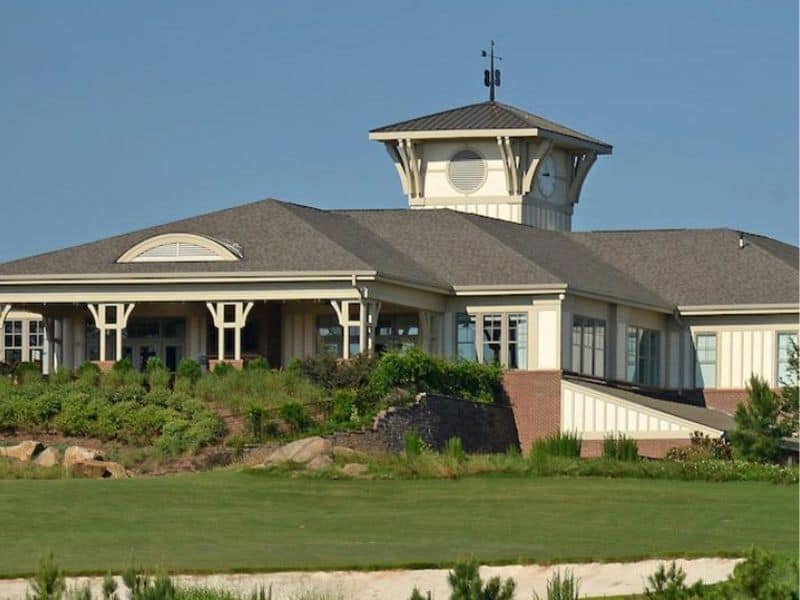
Carol Johnson Poole Clubhouse is a 29,722-square-foot (2,761-square-meter) LEED Silver-certified building.
It was designed by Crenshaw Consulting to be environmentally friendly and resource-efficient.
The building was awarded a LEED Silver certification due to the following features:
- Dedicated parking and bike racks for sustainable transportation.
- High Solar Reflectance Index (SRI) asphalt shingles to minimize the heat island effect.
- Its construction waste was recycled to save landfill space.
- It was built with FSC-certified wood.
- The use of low-VOC paints to enhance indoor air quality.
15. Stateview Hotel

Stateview Hotel is among the top eco-friendly green buildings in North Carolina, with a LEED Silver certification.
Cooper Carry designed the 118,291-square-foot (10,990-square-meter) hotel in line with the UN’s Sustainable Development Goals (SDG). Therefore, it integrates the following green features:
- Landscaping with native and adaptive plant species to support the local ecology and conserve water.
- Excellent site selection and preparation for stormwater quality.
- Energy-efficient lighting systems to save electricity.
Final Thoughts On Eco-Friendly Green Buildings in North Carolina
With these eco-friendly green buildings in North Carolina, it’s evident that the state is committed to sustainable construction initiatives.
The green features incorporated into these buildings minimize their environmental impact while promoting a healthier lifestyle for residents. So, why not try integrating some of these features into your next green project?





